Wetherspoon took over The Horse Shoe pub which was built in the late 1930s. The census of 1881 and 1891 records that Isaac Pepper was the landlord of the old Horse Shoe. He lived here with his family and two servants. A tithe map shows that The Horse Shoe was on this site in 1839.
Prints and text about The Horse Shoe.
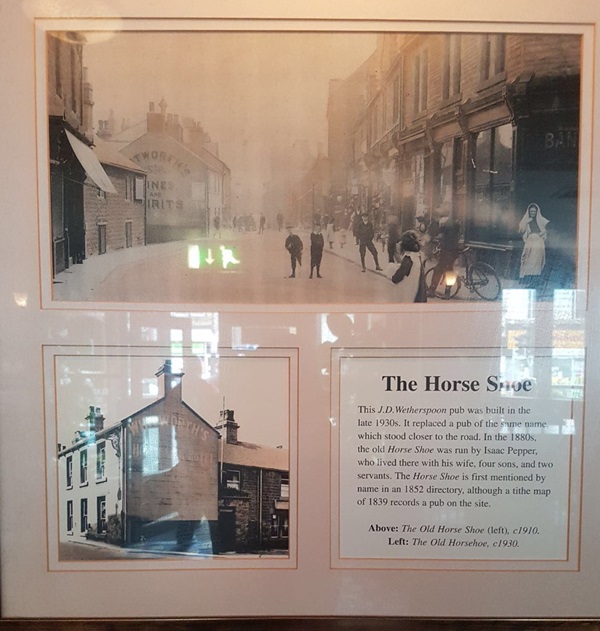
The text reads: This J D Wetherspoon pub was built in the late 1930s. It replaced a pub of the same name, which stood closer to the road. In the 1880s, the old Horse Shoe was run by Isaac Pepper, who lived there with his wife, four sons, and two servants. The Horse Shoe is first mentioned by name in an 1852 directory, although a tithe map of 1839 records a pub on the site.
Above: The Old Horse Shoe (left), c1910
Left: The Old Horseshoe, c1930.
A print of Arthur Wroe, Co-operative pioneer, worked at the glass bottle works and the Main Colliery.
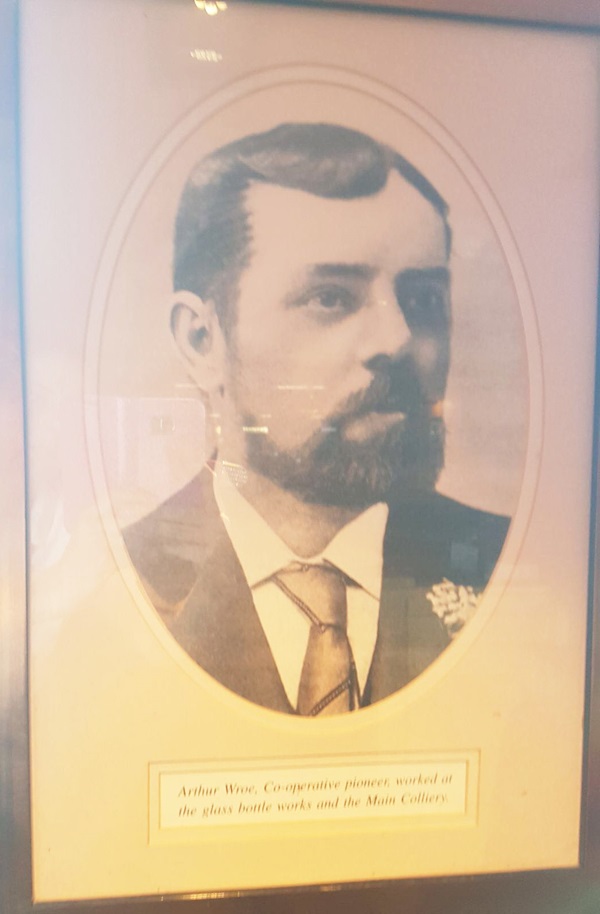
Text about the Co-operative.
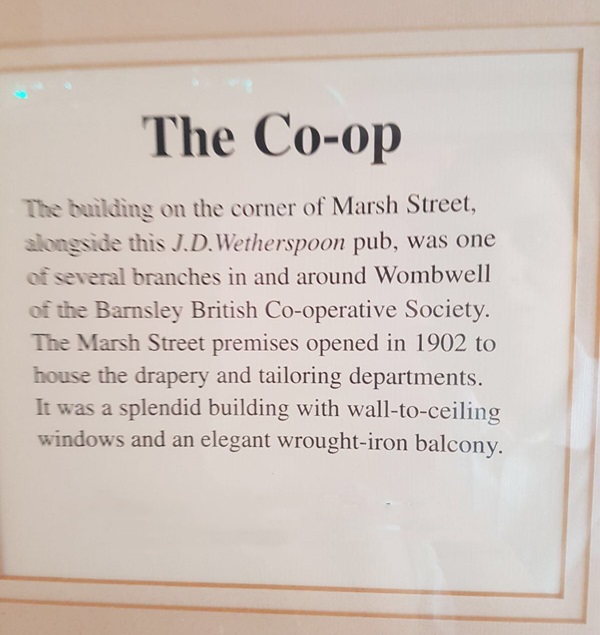
The text reads: The building on the corner of Marsh Street alongside this J D Wetherspoon pub, was one of several branches in and around Wombwell of the Barnsley British Co-operative Society. The Marsh Street premises opened in 1902 to house the drapery and tailoring departments. It was a splendid building with wall-to-ceiling windows and an elegant wrought-iron balcony.
Above: The Co-op (left) and High Street, c1905
Left: The Horse Shoe and the Co-op.
Photographs and text about industry in Wombwell.
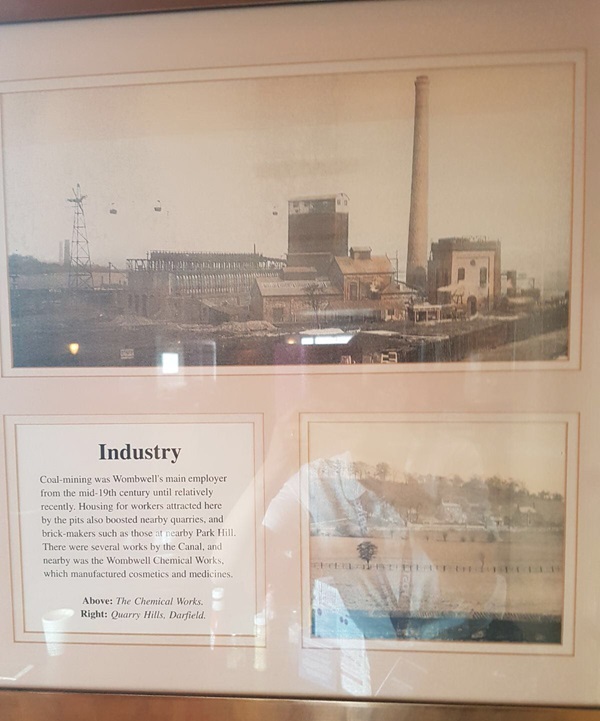
The text reads: Coal-mining was Wombwell’s main employer from the mid-19th century until relatively recently. Housing for workers attracted here by the pits also boosted nearby quarries, and brick-makers such as those at nearby Park Hill. There were several works by the Canal, and nearby was the Wombwell Chemical Works, which manufactured cosmetics and medicines.
Above: The Chemical Works
Right: Quarry Hills, Darfield.
A photograph and text about mining in Wombwell.
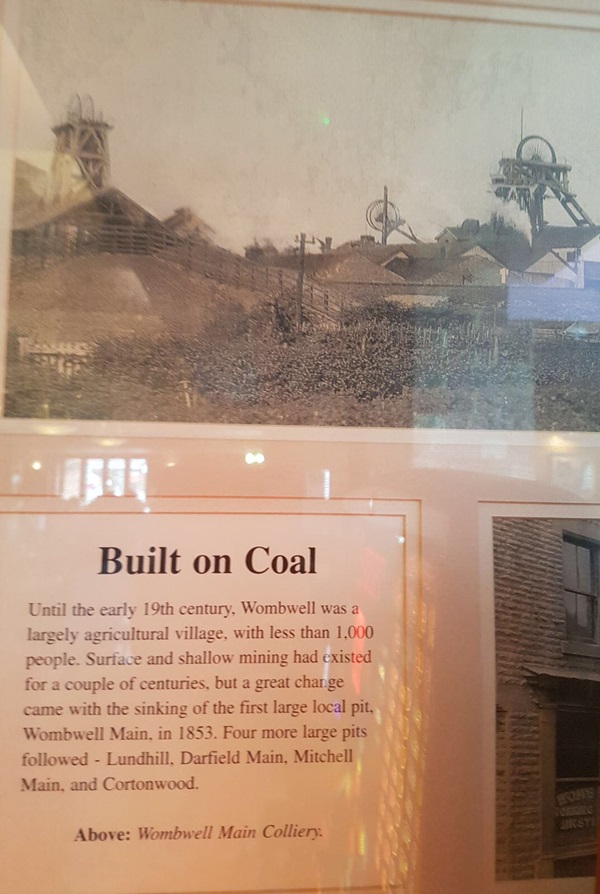
The text reads: Until the early 19th century, Wombwell was a largely agricultural village, with less than 1,000 people. Surface and shallow mining had existed for a couple of centuries, but a great change came with the sinking of the first large local pit, Wombwell Main, in 1853. Four more large pits followed – Lundhill, Darfield Main, Mitchell Main, and Cortonwood.
Above: Wombwell Main Colliery
Right: Wombwell Working Men’s Club, 1910.
Photographs of pit ponies.
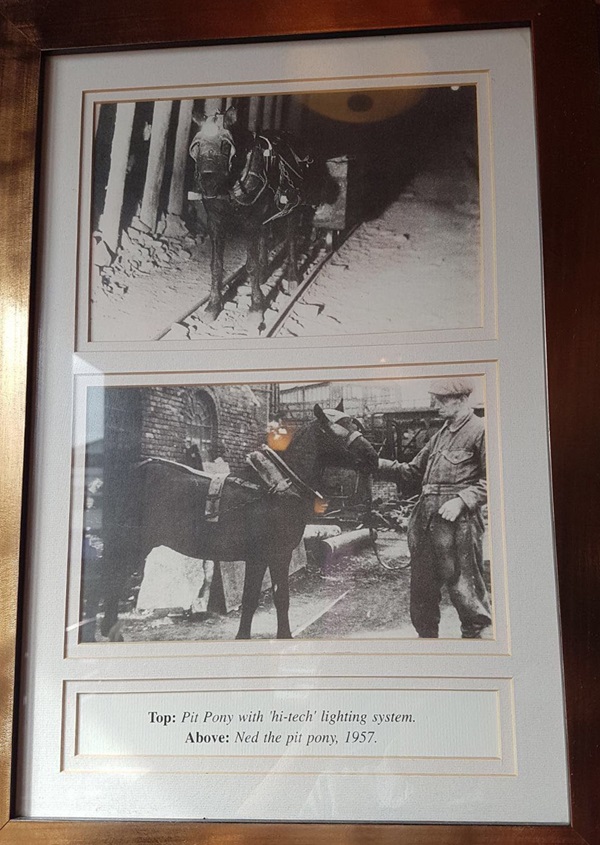
Top: Pit pony with hi-tech lighting system
Above: Ned the pit pony, 1957.
An illustration and photograph of stations in the area.
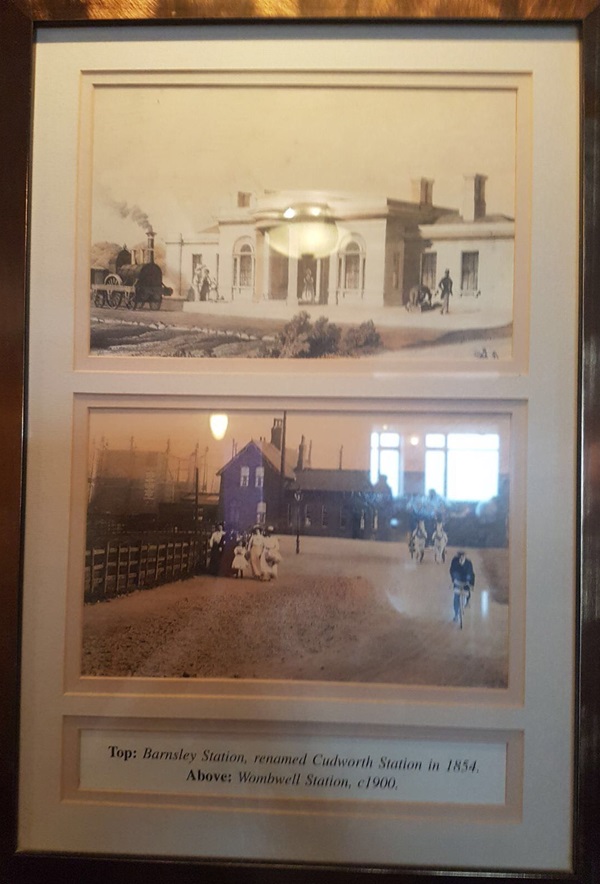
Top: Barnsley Station, renamed Cudworth Station in 1854
Above: Wombwell Station, c1900.
Photographs and text about Dearne & Dove Canal.
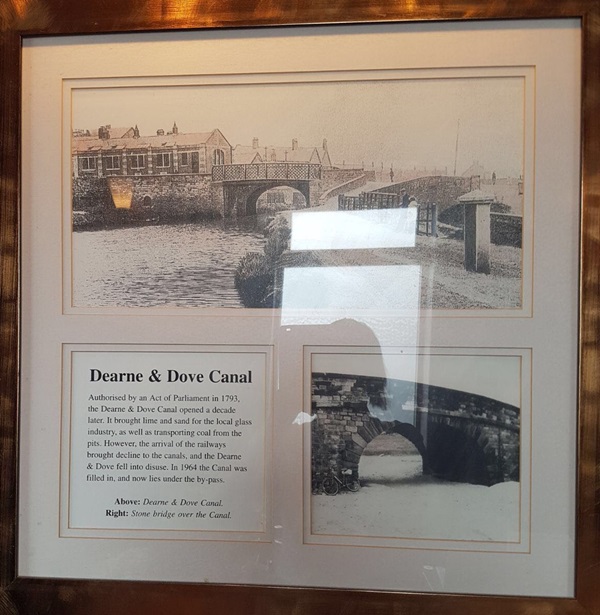
The text reads: Authorised by an Act of Parliament in 1793, the Dearne & Dove Canal opened a decade later. It brought lime and sand for the local glass industry, as well as transporting coal from the pits. However, the arrival of the railways brought decline to the canals, and the Dearne & Dove fell into disuse. In 1964 the Canal was filled in, and now lies under the by-pass.
Above: Dearne and Dove Canal
Right: Stone bridge over the Canal.
External photograph of the building – main entrance.
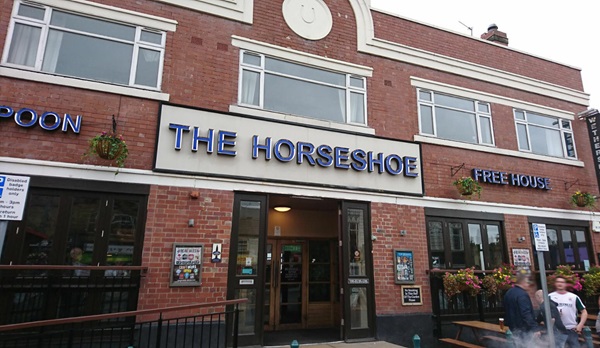
If you have information on the history of this pub, then we’d like you to share it with us. Please e-mail all information to: pubhistories@jdwetherspoon.co.uk